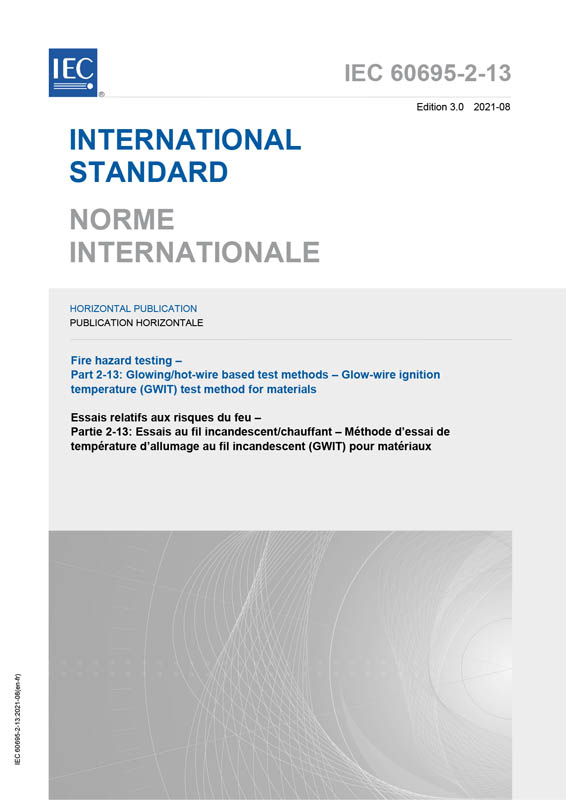IEC 60695-2-13:2021
Fire hazard testing - Part 2-13: Glowing/hot-wire based test methods - Glow-wire ignition temperature (GWIT) test method for materials
Ausgabedatum:
2021-08
Edition:
3.0
Sprache: EN-FR - zweisprachig englisch/französisch
Seitenzahl: 25 VDE-Artnr.: 250188
IEC 60695-2-13:2021 specifies the details of the glow-wire test to be applied to test specimens of solid electrical insulating materials or other solid materials for ignitability testing to determine the glow-wire ignition temperature (GWIT). The GWIT is the temperature which is 25 K (or 30 K) higher than the maximum test temperature, determined during this standardized procedure, at which the tested material does not ignite, or sustained flaming combustion does not occur for a time longer than 5 s for any single flame event and the specimen is not totally consumed. This test is a materials test carried out on a series of standard test specimens. The data obtained, along with data from the glow-wire flammability index (GWFI) test method for materials, IEC 60695-2-12, can then be used in a preselection process in accordance with IEC 60695-1-30 [4] to judge the ability of materials to meet the requirements of IEC 60695-2-11. This basic safety publication focusing on safety test method(s) is primarily intended for use by technical committees in the preparation of safety publications in accordance with the principles laid down in IEC Guide 104 and ISO/IEC Guide 51. One of the responsibilities of a technical committee is, wherever applicable, to make use of basic safety publications in the preparation of its publications. This publication is to be read in conjunction with IEC 60695-2-10. This third edition cancels and replaces the second edition published in 2010 and Amendment 1:2014. This edition constitutes a technical revision. This edition includes the following significant technical changes with respect to the previous edition:
- New terms and definitions with regards to times and durations have been added to Clause 3, with an effect on the application of the test method.


